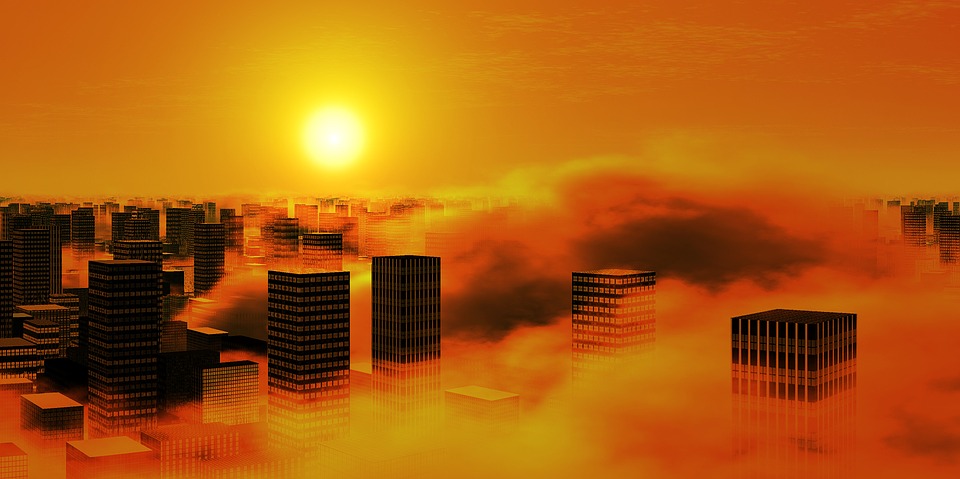Pollution refers to the contamination of the earth's environment with materials that interfere with human health, quality of life or the natural functioning of the ecosystems. The major forms of pollution include water pollution, air pollution, noise pollution and soil contamination. Air pollution is a serious global public health problem that is managed most effectively by collective (societal) action to control emissions of both primary air pollutants and precursors that react to form secondary air pollutants. Air pollution in India has increased rapidly due to population growth, increase in the numbers of vehicles, use of fuels , bad transportation systems , poor land use pattern, industrialization, and above all, ineffective environmental regulations. Sulphur Dioxide, Nitrogen Dioxide, Particulate Matter are some of the pollutants which are contributing to environmental pollution. Many major Indian cities, including Mumbai, Pune and Kolkata, grapple with air pollution. However, India’s air pollution crisis is largely due to the noxious, winter air quality in Delhi and some cities in north and central India.
Causes of Air pollution in India
Vehicle Emissions
Vehicle emissions are another source of fossil fuel emissions and air pollution. Pollution emitting from vehicles including trucks, jeeps, cars, trains, airplanes cause immense amount of pollution. Sulfur dioxide emitted from the combustion of fossil fuels like coal, petroleum and other factory combustibles is one the major cause of air pollution.
Agricultural activities
The Indian state of Punjab has two growing seasons—one from May to September and another from November to April. In November, Punjab farmers typically sow crops such as wheat and vegetables; but before they do that, farmers often set fire to fields to clear them for planting. This increases air pollution in Delhi and NCR area. Ammonia is a very common by product from agriculture related activities and is one of the most hazardous gases in the atmosphere. Use of insecticides, pesticides and fertilizers in agricultural activities has grown quite a lot.
Dust and Wildfires
In India large areas of open land and construction area that have little to no vegetation, and are particularly dry due to a lack of precipitation, wind can naturally create dust storms. This particulate matter, when added to the air, can have a natural warming effect and can also be a health hazard for living creatures.
India the actual forest cover of India is 19.27% of the geographic area, corresponding to 63.3 million ha. Out of the 63 million ha. of forests an area of around 3.73 million ha can be presumed to be affected by fires annually. Wild fires cause air pollution by releasing particulate matter into the air. These particles can become lodged in your respiratory system, causing irritation to tissues.
Power Plants
India is the world's second largest coal burner after China, generating 210 GW of electricity a year, mostly from coal. But it is likely to become the largest if plans to generate a further 160 GW annually are approved. Fossil fuel emissions contain the major greenhouse gases, including carbon dioxide, methane, nitrous oxide and fluorinated gases.
Deforestation
Deforestation affects the atmosphere in several ways. Forests act as sinks for carbon dioxide through a process called carbon sequestration.
Waste
Landfills are also known to generate methane, which is not only a major greenhouse gas, but also an asphyxiant and highly flammable and potentially hazardous if a landfills grow unchecked.
Electronic waste
About 80% of e-waste from developed countries is illegally exported to developing countries especially China, India and Pakistan because of the lower labor costs and lack of governmental regulations. Large number of people in India are involved in unscientific dismantling, crude chemical leaching of printed circuit boards, burning of wires/waste electrical and electronic components, grinding of residues, washing of metal rich residue (milled black powder).
Tips to guard against air pollution
Open your windows
Having your windows open for 15 minutes a day can make a huge difference to the pollution levels in your house, as doing so can do wonders for humidity issues and ventilation challenges. This is a good practice for when you are using strong cleaning products, painting, or after you just finished cooking.
Drink More Green Tea
Pollution means our exposure to toxins and free radicals are high and these can be ageing to skin, thanks to the oxidative stress this causes to the body. You can help this process by introducing more antioxidants into your diet.
Use Natural Cleaning Products
Most cleaning products contain harsh chemicals, which release toxic pollutants into your home.
Cleaning indoor air
Portable or central air cleaning systems can reduce concentrations of indoor air pollutants, of either outdoor or indoor origin.
Avoiding outdoor activity when and where air pollutant levels are higher
Ambient air pollution levels vary seasonally, day-to-day, and by time-of-day. For example, ultraviolet light from the sun activates the chemical reactions that form ozone, generally leading to higher concentrations in late morning through early evening.
Source: Indian J Community Med., doi: 10.4103/0970-0218.106617, International Journal on Emerging Technologies 8(1): 191-195(2017), doi: 10.3978/j.issn.2072-1439.2014.12.21, livestrong.com, fire.uni-freiburg.de, livestrong.com, phys.org, DailyMail.co.uk, naturalnews.com
